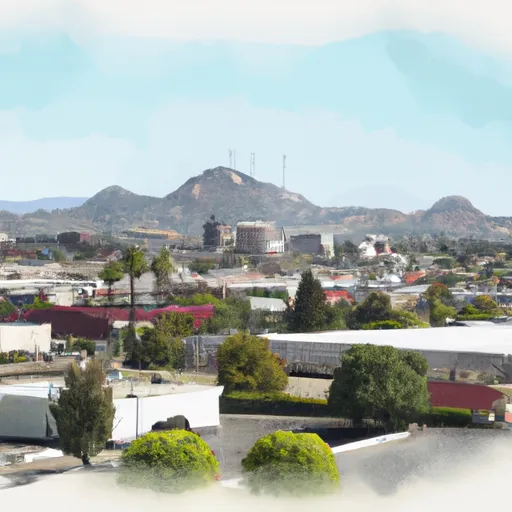-
 Snoflo Premium
Snoflo Premium
Get unlimited access to all our content
With no Ad interruptions! - Start Your Free Trial Login with existing account
San-Lucas
Eden Index
Climate
9.0
•
Recreation
1.0
•
Community
•
Safeguard
3.9/10

San Lucas is a small town located in southern Monterey County, California. The area experiences a Mediterranean climate with warm, dry summers and mild, wet winters. Summers are typically sunny and hot, with temperatures often reaching the mid-90s Fahrenheit, while winters are cooler and wetter, with temperatures averaging in the 50s.
Hydrologically, San Lucas is part of the Salinas River watershed. The Salinas River, one of the largest rivers in California, flows nearby, providing a valuable water source for the region's agriculture and wildlife. In addition, there are several creeks and streams that contribute to the hydrology of the area.
San Lucas is surrounded by picturesque natural beauty, offering various outdoor recreation opportunities. The nearby Pinnacles National Park provides hiking trails, rock climbing, and bird-watching opportunities amidst unique rock formations and diverse wildlife. The area is also known for its scenic vineyards and wineries, offering wine tasting and tours. Furthermore, the nearby coastline offers opportunities for beach activities, such as surfing, swimming, and exploring tide pools. With its pleasant climate and diverse natural surroundings, San Lucas beckons outdoor enthusiasts to explore its scenic wonders.
What is the Eden Index?
The Snoflo Eden Index serves as a comprehensive rating system for regions, evaluating their desirability through a holistic assessment of climate health, outdoor recreation opportunities, and natural disaster risk, acknowledging the profound impact of these factors on livability and well-being.
Climate Health Indicator (CHI): 9.0
San-Lucas receives approximately
355mm of rain per year,
with humidity levels near 73%
and air temperatures averaging around
15°C.
San-Lucas has a plant hardyness factor of
9, meaning
plants and agriculture in this region tend to thrive here all year round.
By considering the ideal temperature range, reliable water supplies, clean air, and stable seasonal rain or snowpacks, the Climate Health Indicator (CHI) underscores the significance of a healthy climate as the foundation for quality living.
A healthy climate is paramount for ensuring a high quality of life and livability in a region, fostering both physical well-being and environmental harmony. This can be characterized by ideal temperatures, reliable access to water supplies, clean air, and consistent seasonal rain or snowpacks.
Weather Forecast
Streamflow Conditions
Central California Coastal
Area Rivers
Central California Coastal
Snowpack Depths
Central California Coastal
Reservoir Storage Capacity
Central California Coastal
Groundwater Levels
Recreational Opportunity Index (ROI): 1.0
The Recreational Opportunity Index (ROI) recognizes the value of outdoor recreational options, such as parks, hiking trails, camping sites, and fishing spots, while acknowledging that climate plays a pivotal role in ensuring the comfort and consistency of these experiences.
Access to outdoor recreational opportunities, encompassing activities such as parks, hiking, camping, and fishing, is crucial for overall well-being, and the climate plays a pivotal role in enabling and enhancing these experiences, ensuring that individuals can engage in nature-based activities comfortably and consistently.
Camping Areas
| Campground | Campsites | Reservations | Toilets | Showers | Elevation |
|---|---|---|---|---|---|
| Lake Nacimiento | 337 | 820 ft | |||
| South Shore San Antonio | None | 860 ft | |||
| North Shore San Antonio | 271 | 823 ft | |||
| Camp Roberts Military | None | 613 ft | |||
| Williams Hill Rec Area | None | 2,260 ft |
Nearby Fishing
Catastrophe Safeguard Index (CSI):
The Catastrophe Safeguard Index (CSI) recognizes that natural disaster risk, encompassing floods, fires, hurricanes, and tornadoes, can drastically affect safety and the overall appeal of an area.
The level of natural disaster risk in a region significantly affects safety and the overall livability, with climate change amplifying these risks by potentially increasing the frequency and intensity of events like floods, fires, hurricanes, and tornadoes, thereby posing substantial challenges to community resilience and well-being.
Community Resilience Indicator (CRI):
The Community Resilience Indicator (CRI) recognizes that education, healthcare, and socioeconomics are crucial to the well-being of a region. The CRI acknowledges the profound impact of these elements on residents' overall quality of life. By evaluating educational resources, healthcare accessibility, and economic inclusivity, the index captures the essential aspects that contribute to a thriving community, fostering resident satisfaction, equity, and social cohesion.

